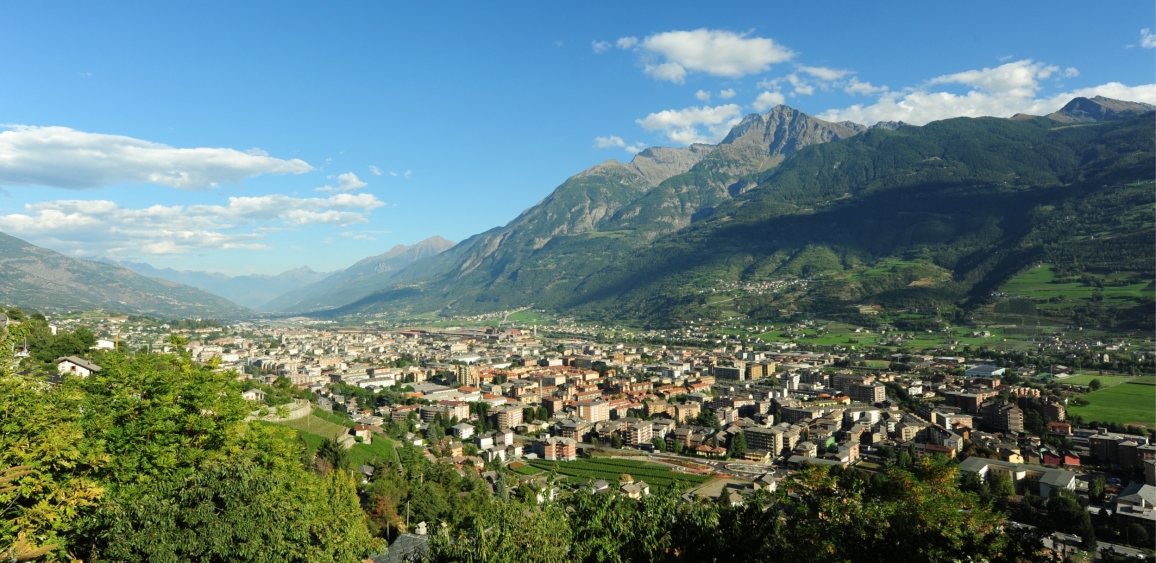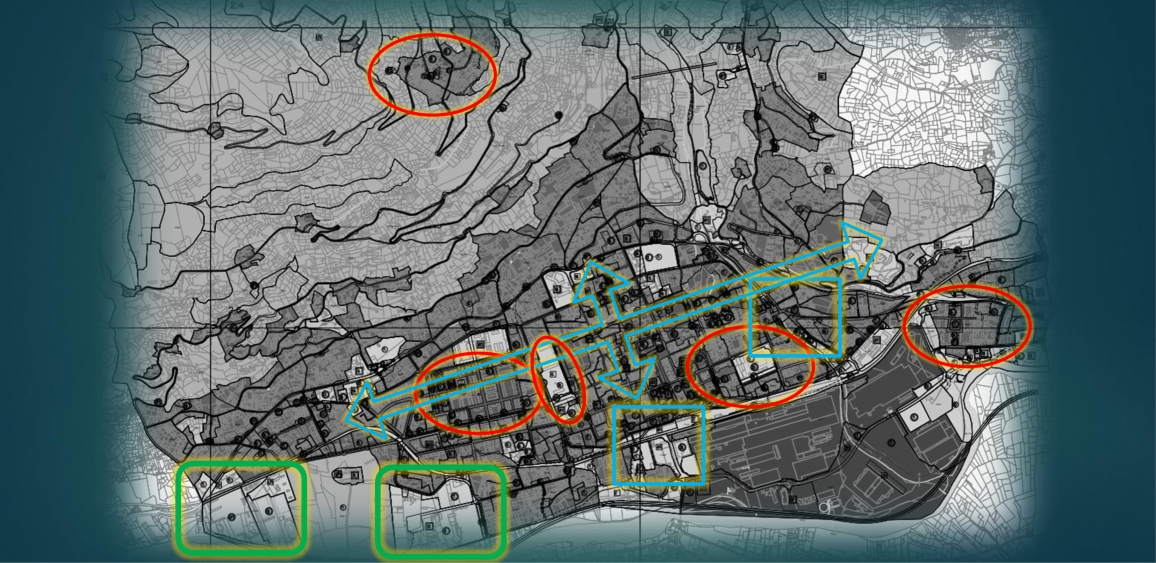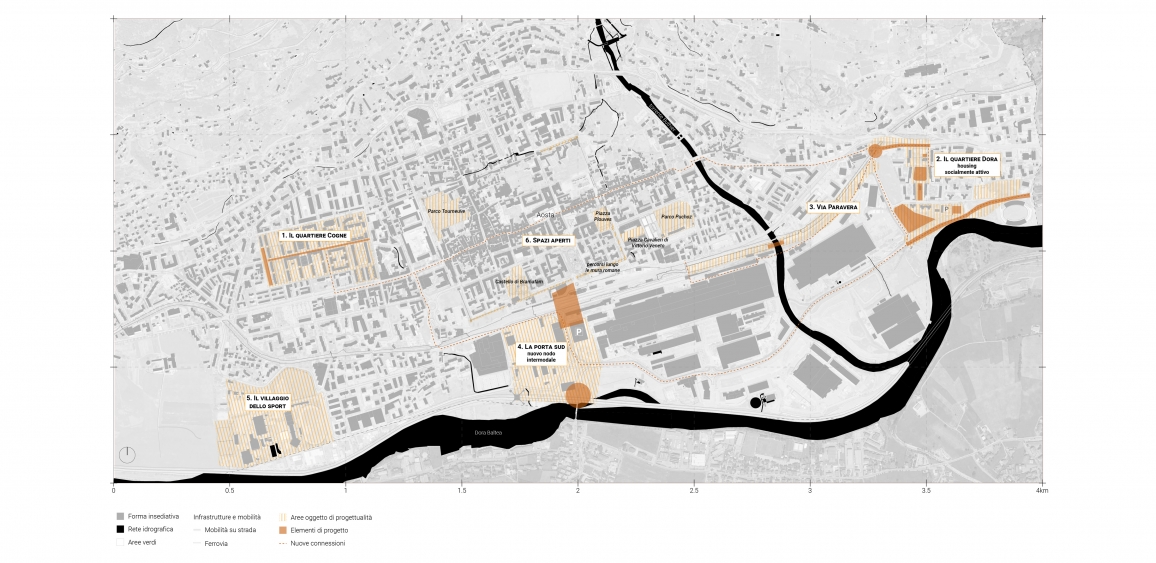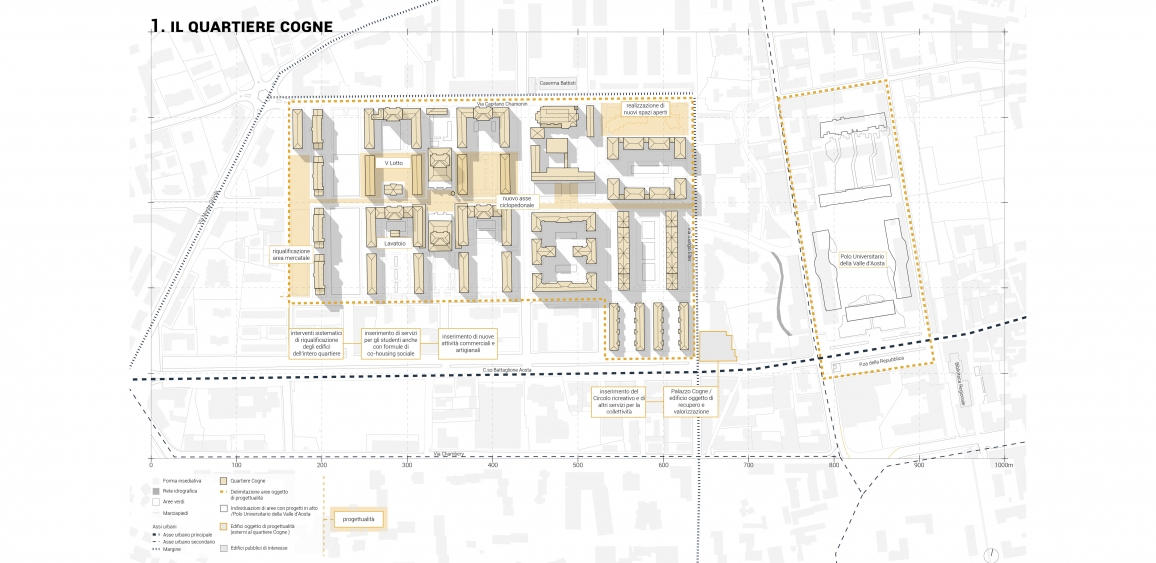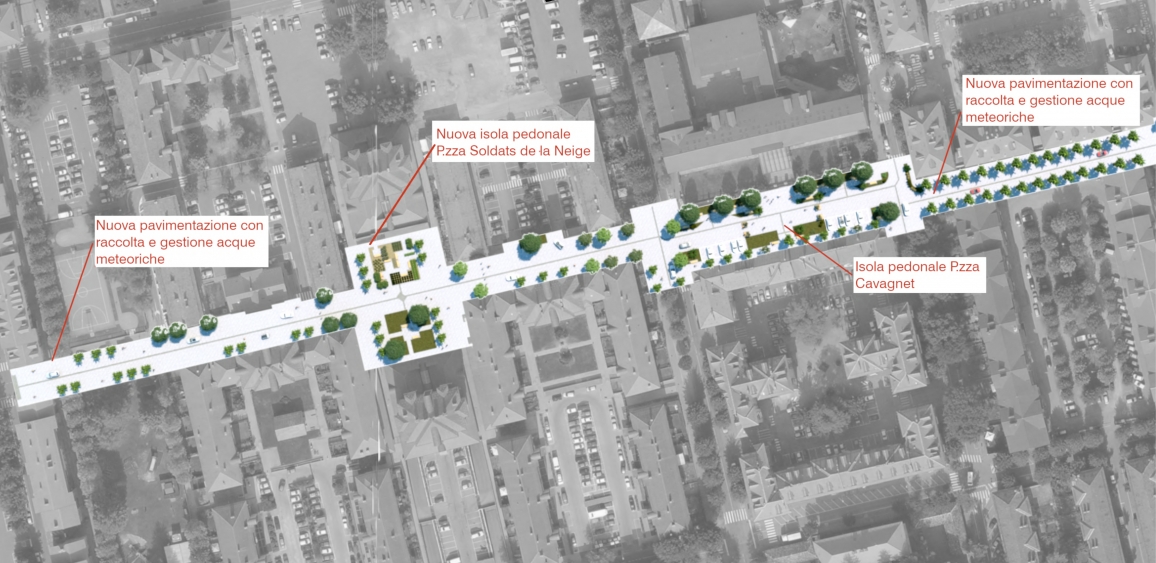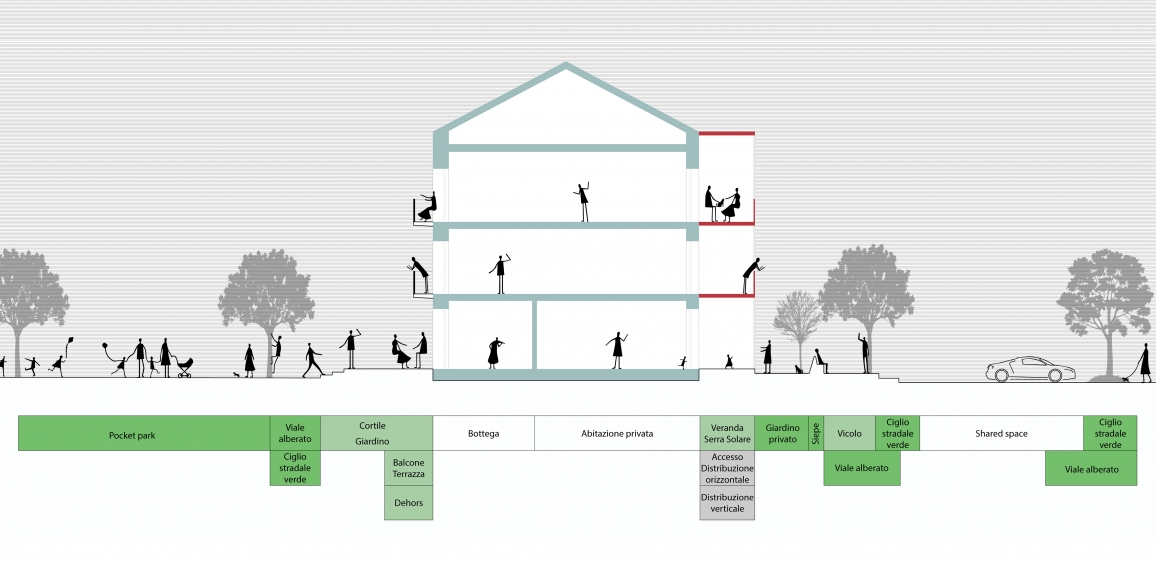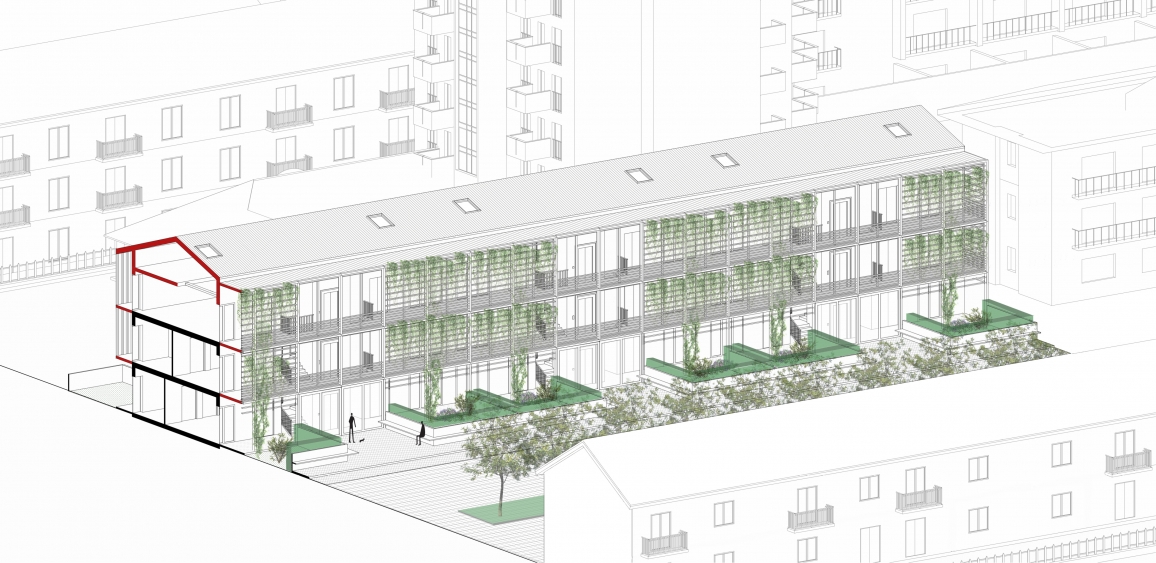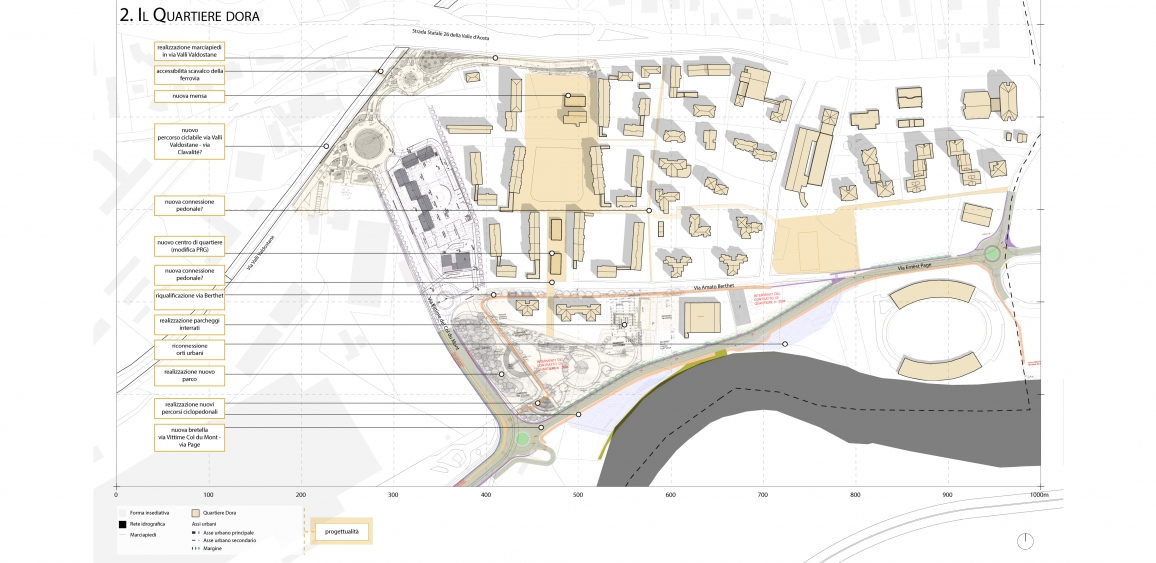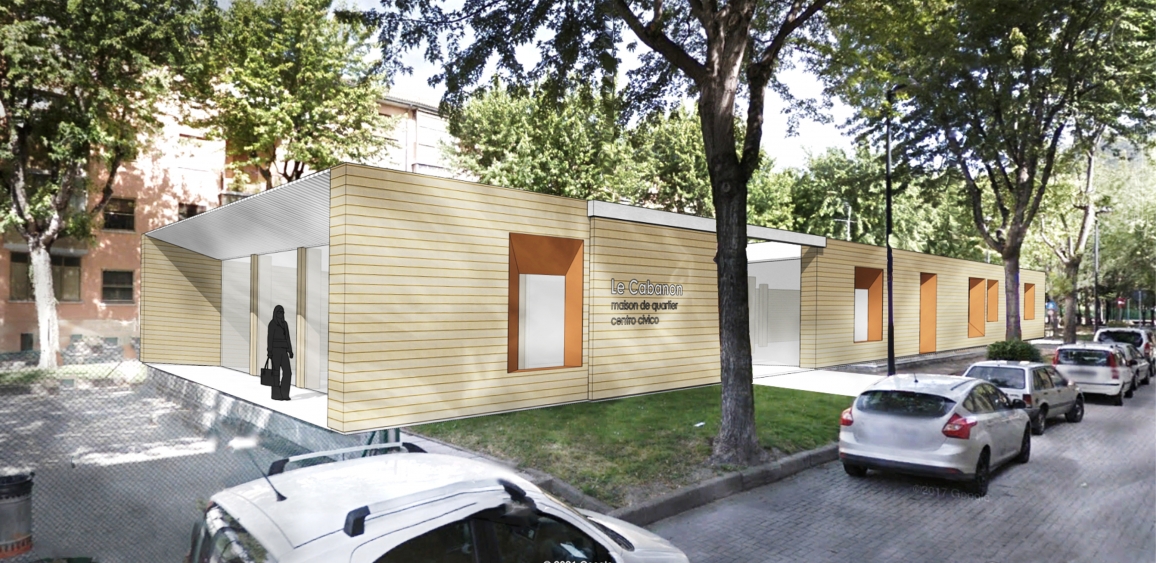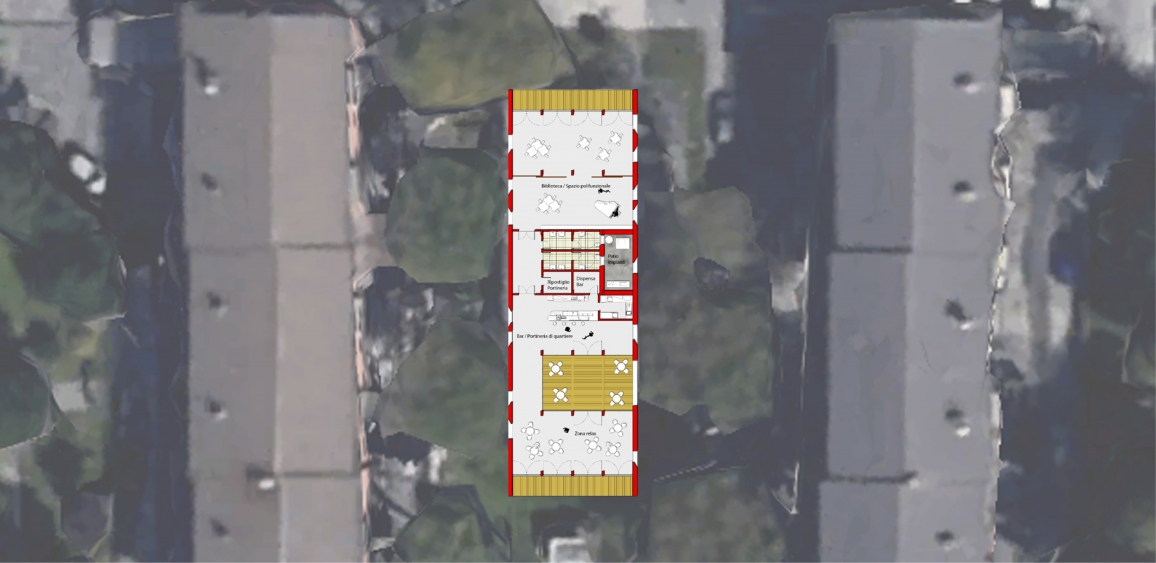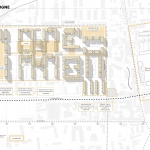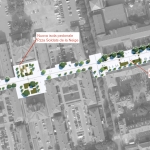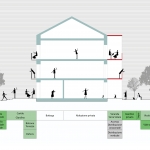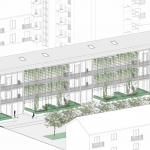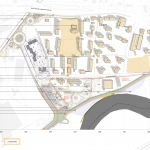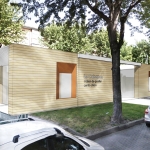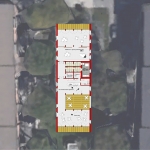The PINQuA and Urban Regeneration Calls have funded the interventions in two peripheral districts of Aosta, both of which were mainly working class settlements.
The cardo and the decumanus of the Roman urbs inspired the projects that reaffirmed them as a scheme of rebirth and regeneration for the two neighbourhoods.
The Cogne neighbourhood was built at the beginning of the 1900s by the Ansaldo steel factory, to house the workers drawn from other Italian regions.
The Decumano along via Colonnello Alessi is the core of the project. It offers a bicycle / pedestrian lane, which connects a system of open spaces: market, green- and play-areas, and the new square, occupied for thirty years by two temporary prefabricated buildings that will be dismantled.
At the upper corner of the neighbourhood, two skyscrapers will be demolished to create a public park.
The buildings, being redeveloped, will advance the mixité of activities, to revitalise the social fabric and to overcome residential monofunctionality.
Places will be restored to community activity, and an underground car park with 360 lots will be reopened, to make spaces free from road parking.
Along North-South, the Cardo complements the vehicular and bicycle paths to the city.
The Dora neighbourhood was settled in the 1960s in an area with significant physical barriers along the perimeter: railway, national road, steel plant, and the Dora River, that altogether have cut off the neighbourhood from the rest of the city.
Here the Cardo is the backbone of new welfare services: nursery school, school canteen, and the headquarters of the new Neighbourhood Center.
The Decumano, along the renewed via Berthet intersects this axis. The Decumano relieves the residential area from the traffic that is moved to the new arterial road along the South border. To complete the interventions are a large park with recreational facilities, an underground car park, and a new footpath where one does not exist at present along the access road to the neighbourhood.
Since the physical barriers remain, the project aims to improve the quality of the urban fabric and to foster the conditions for social development
Italiano
